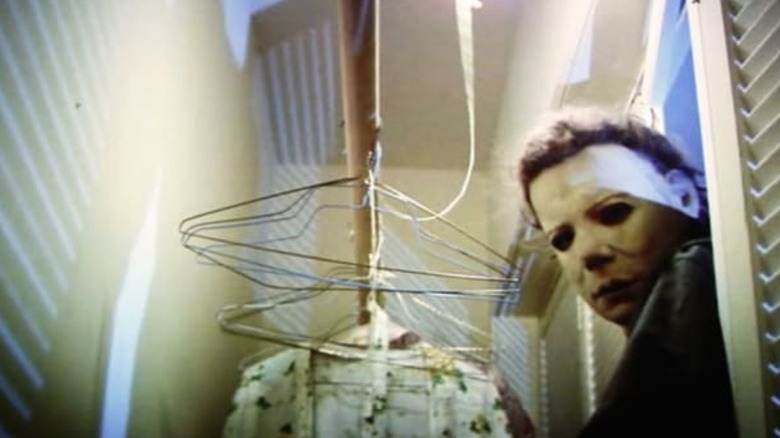
John Carpenter is a horror legend. Over his decades-long career, he has turned out classic after classic, even being awarded the Golden Coach Award at the 2019 Cannes Film Festival. The likes of "Halloween" reinvented the horror genre, revolutionizing the slasher film while cementing chief antagonist Michael Myers as a horror icon to be reckoned with. Remakes such as "The Thing" were wonders of practical effects, and "Starman" proved that Carpenter could move hearts as easily as he could incite screams.
His last directorial effort was 2010's "The Ward," and in the time since he's settled into a rhythm of gaming and producing, forgoing most modern horror movies for some well-deserved time where the shots are his call to make. Still, his compositional contributions to the latest "Halloween" trilogy are as good as his work's ever been, and he's even teasing his desire to direct a "Dead Space" movie. At this point, Carpenter deserves to do whatever Carpenter wants to do. With a storied film career attached to his name, we've done the unenviable and ranked his movies. Few, if any, are outright flops, and it's remarkable to see so much stellar work attributed to such a singular visionary. Here are the 20 best John Carpenter movies, ranked.
Memoirs Of An Invisible Man (1992)
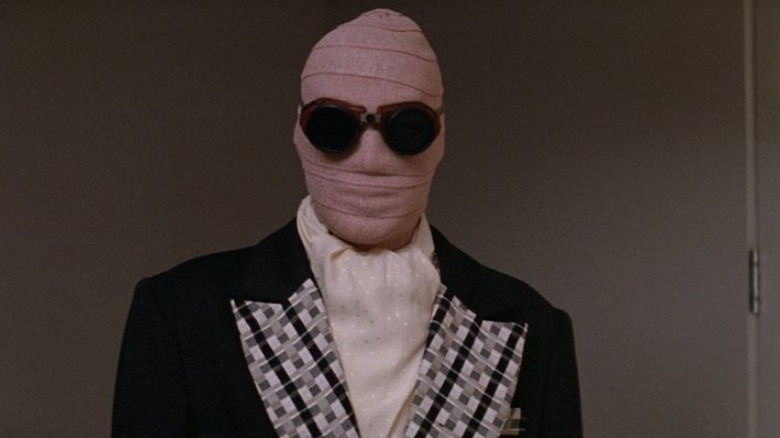
It's hard to find anything good to say about John Carpenter's "Memoirs of an Invisible Man," the only film within Carpenter's whole filmography that might amount to an outright failure. This story of Chevy Chase's invisible executive and his tryst with Daryl Hannah's television producer Alice — all the while being pursued by CIA forces — is a misfire from the start. A critical and commercial failure, Carpenter tried his hardest here but even his humanistic instincts couldn't save "Memoirs of an Invisible Man" from feeling like anything other than the result of a really, really bad day at the Warner Bros. studio.
Unlike some of his similarly derided fare, there are no legions of fans lining up to reevaluate the film. While critical misfires are often better appreciated years later, "Memoirs of an Invisible Man" has nothing — no subtext, no great plot — to merit reconsideration. While the digital effects are noticeably strong, a tech demo does not a movie make. The project was once attached to Ivan Reitman before being handed over to Carpenter, though it may not have made much of a difference. With such an illustrious career, Carpenter is likely grateful the movie is all but invisible in the current day.
Ghosts Of Mars (2001)
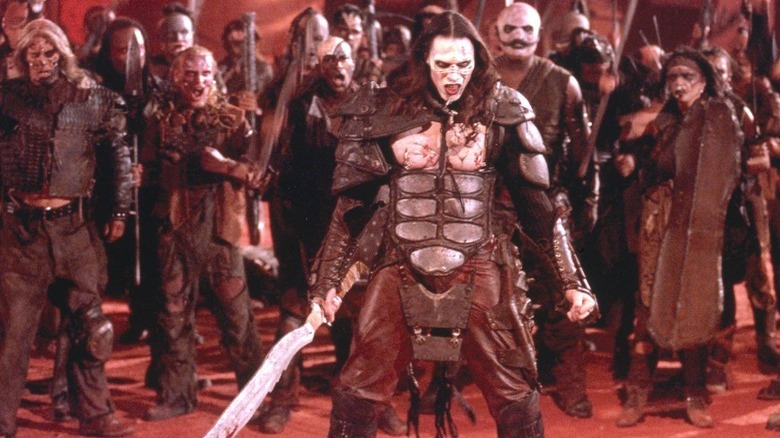
John Carpenter went full throttle with "Ghosts of Mars," writing, directing, and scoring this 2001 action/horror hybrid. Unfortunately, it wasn't enough to save it from feeling like a practical joke. "You got us, John Carpenter. Good one." Since release, the film has seen something of a resurgence and is now marginally considered something of an unsung cult classic, though unlike Carpenter's "The Thing" (similarly derided when first released), the argument for "Ghosts of Mars" isn't quite as strong.
An outer space riff on the "Escape From New York" formula (with Ice Cube's convict "Desolation" Williams standing in for Snake Plissken), Carpenter's directorial eye is as assured as ever as he structures what amounts to a violent, kinetic tale of Martian spirits possessing the bodies of human invaders. Stylistically and narratively, "Ghosts of Mars" is at least more involved than that synopsis gives it credit for. There's a lot going on, and Carpenter handles it with aplomb. Its poster art is the stuff video rental stores used to dream of, yet the whole enterprise feels oddly inert. There's no one element to blame, but at its core this is a well-intentioned big-budget misfire.
Elvis (1979)
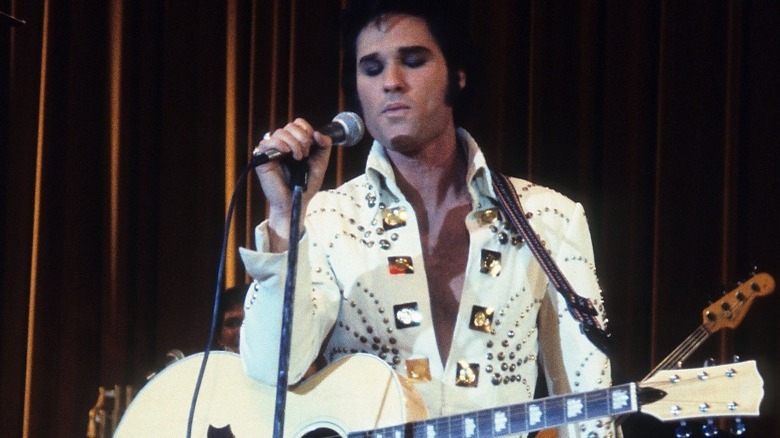
Made for television and first broadcast by ABC on February 11, 1979, "Elvis" is by no means a bad movie, though it is a difficult one to square with John Carpenter's legacy. Make no mistake, Carpenter achieves the nigh impossible here. Unlike Baz Luhrmann's "Elvis," an electric and over-the-top hodgepodge of elevated biopic ideals, Carpenter's "Elvis" is as straightforward as they come. With a personality like Elvis at its center, that's the best an audience could hope for.
While "Elvis" is successful, and frequent Carpenter collaborator Kurt Russell nabbed an Emmy nomination, it is the odd duck in Carpenter's storied career since it shot right after his slasher opus "Halloween." With an epic runtime of 168 minutes, Carpenter tried his hand at something different here, a drama indicative of what his films might have looked like had he shifted farther away from the horror genre later in his career. As it is, it's a curious outing and a pretty entertaining one at that, but it doesn't feel like the Carpenter audiences know.
Vampires (1998)
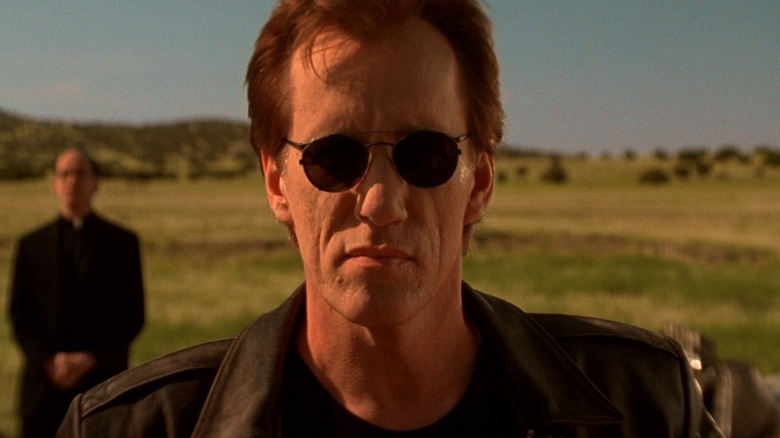
Not to be mistaken with "Vampires: Los Muertos," the sequel starring none other than Jon Bon Jovi, John Carpenter's "Vampires" is an adaptation of John Steakley's novel of almost the same name. James Woods stars as Jack Crow, a vampire hunter with a personal vendetta. Raised by the church, Crow is tasked with preventing a vampire apocalypse at the hands of Jan Valek (Thomas Ian Griffith), the first and most powerful vampire.
Valek intends to secure the black cross, an ancient relic that will do ... something. It's never entirely clear, though that does little to diminish the fun. While "In the Mouth of Madness" is a fantastic horror outing from Carpenter, it's his only output in the 1990s that can arguably be considered on par with his '80s work. Unlike several other maligned efforts, Carpenter's "Vampires" hasn't had quite the same contemporary reevaluation. While it's not great, there is some fun to be had, even if the enterprise writ large feels like Carpenter cashing a check, not endeavoring for anything more.
Escape From L.A. (1996)
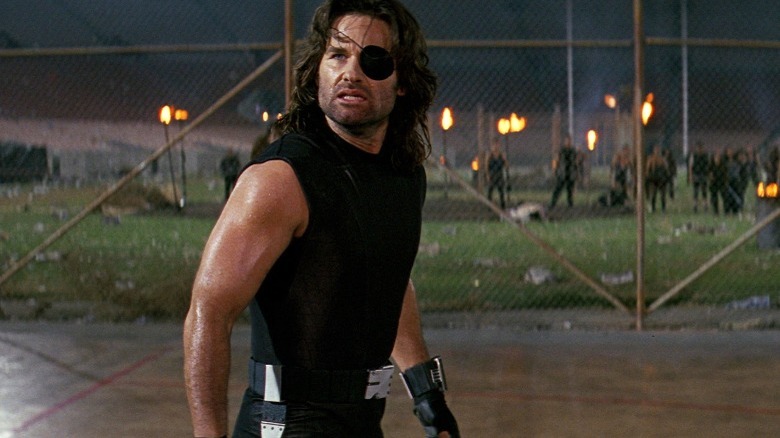
John Carpenter has made it clear that he has no interest in revisiting either "Escape from L.A." or Kurt Russell's Snake Plissken. When Carpenter is done with a movie, he's done, and no amount of glossy 4K releases could change his mind. Less successful at the box office than its predecessor, "Escape from L.A." is no different than most other Carpenter releases. Maligned at the time, the movie now has a strong cult following likely in no small part due to Pam Grier's role as a transgender associate of Snake's.
With an outrageous plot that has Plissken once again dropped into a hellhole on a ticking-clock rescue mission, "Escape from L.A." does hit harder today than it might have at the time, though its excess does skirt the line of simply being too much, as when Snake surfs with Peter Fonda. It's considerably less contained than the first. Bigger, louder, and more spectacular, it's no "Escape from New York," but it's still John Carpenter so there's very little worth escaping from.
Village Of The Damned (1995)
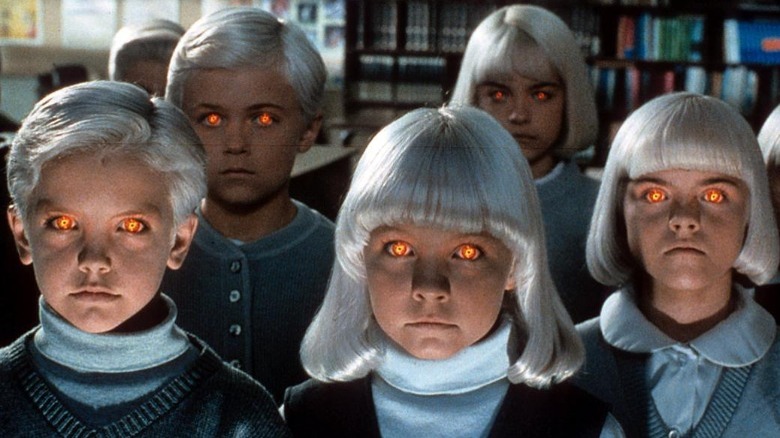
"Village of the Damned," a remake of the 1960 film of the same name (itself adapted from the 1957 book "The Midwich Cuckoos") is a lot like John Carpenter's "Ghosts of Mars." It's a narrative mess, a movie that bombed critically and financially, and at a glance looks like any number of direct-to-video bargain-bin horror offerings. Only, it's more than that, a big, messy, bold piece of Carpenter that saw a nationwide theatrical release. Sure, no one saw it, and while audiences can't exactly be blamed for that, years later it merits reconsideration.
Principally, Carpenter has an excellent cast at his disposal. The late Christopher Reeve stars in his last theatrically-released film, and Kirstie Alley reminds audiences (much like she did with "Cheers") that she was once a reasonably formidable performer. While Carpenter takes some liberties with the story of mysteriously-conceived children with sinister powers, and not always for the better. There's even a setting shift from the United Kingdom to Northern California, but there's something curiously grotesque and engaging here. It's alien children wreaking havoc, but Carpenter never lets the B-movie shenanigans completely erode the humanism or moral urgency of his premise.
Dark Star (1974)
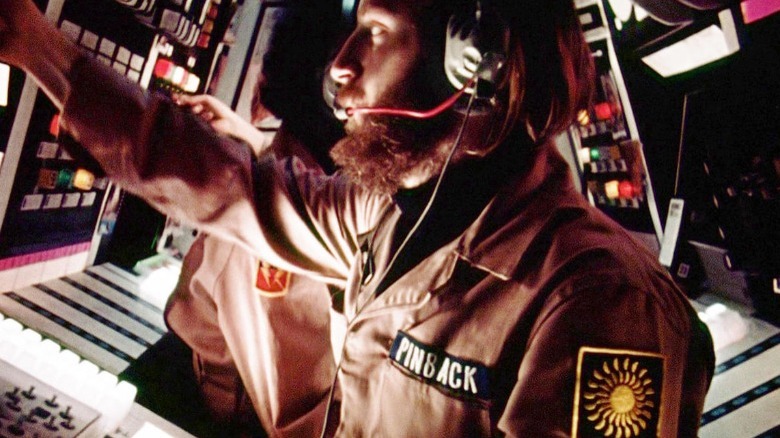
"Dark Star" is more a cult novelty than anything else. Widely considered a low-budget classic today, "Dark Star" remains unknown among most casual audiences. Co-written with Dan O'Bannon of "Alien" fame, it follows the blue-collar crew of the titular spacecraft as they seek to destroy a series of unstable planets. The laid-back vibe of the space crew would influence "Alien," though maybe not the beach ball-looking alien intruder.
While originally conceived as a student film, development gradually expanded to feature length. Carpenter also scored the film, and it's a curiosity worth seeking out given its status as his official feature debut. Funny and featuring a vast scope that belies its budget, "Dark Star" is as good a calling card as any that this wasn't just any old filmmaker looking to make it big. He had the chops, the moxie, and the innate understanding of what makes cinema tick.
Prince Of Darkness (1987)
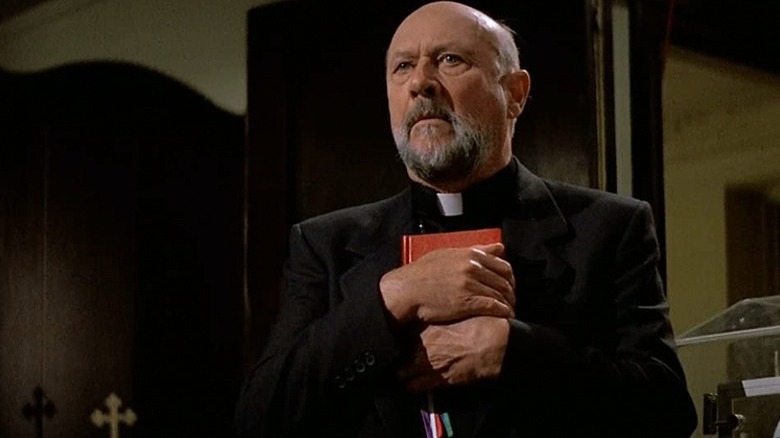
"Prince of Darkness" is ludicrous. While it's got a few remarkable jolts, they're the exception, not the rule in John Carpenter's balls-to-the-wall tale of swirling green Anti-Gods. Theorizing some strange anti-matter is actually related to Satan and his father, Professor Howard Birack (Victor Wong) and a priest (a fantastic Donald Pleasence) join a group of co-eds in the basement of a church to investigate.
The second entry in Carpenter's "Apocalypse" trilogy (which started with "The Thing" and concluded with "In the Mouth of Madness"), "Prince of Darkness" is undoubtedly the weakest of the bunch. It doesn't make a ton of sense, and while it's as stylish as ever, audiences are strained to find some everlasting meaning in the quantum physics and psychobabble. Still, not unlike David Gordon Green's "Halloween Ends" (which Carpenter produced), it was a bold, unconventional horror outing. While it might not work as straight horror, there's no doubt a nugget of Lovecraftian genius nestled with the ancient cults and talk of dream states.
The Ward (2010)
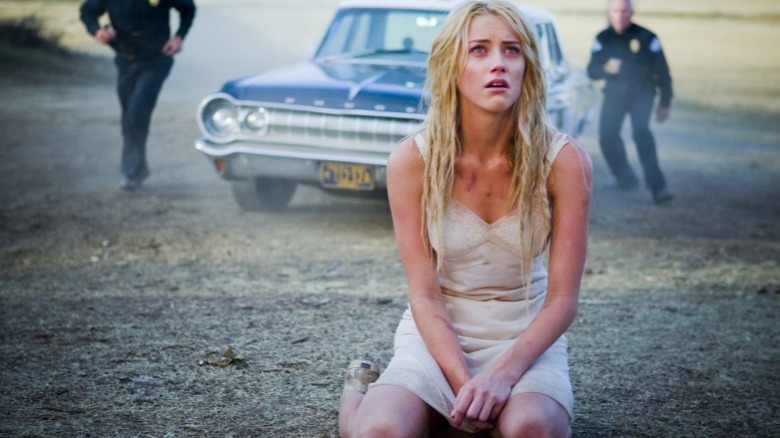
"The Ward" looks remarkably good. While its story of a haunted Amber Heard and her stint in a psychiatric hospital reeks of been there, done that (see: "Shutter Island," "One Flew Over the Cuckoo's Nest"), there's enough of John Carpenter's acute visual eye and an assemblage of talented actors to make it passably entertaining, if not exactly unique.
Heard plays Kristen, a young woman committed to a psychiatric facility called Coos Bay after she inexplicably burns down a rural farmhouse. From there, every cliché on the surgical table appears. There are pills hidden in pillows, sinister nurses, and even ramblings of a dead patient who isn't really dead. "The Ward" piles on the twists almost as if it had been lobotomized itself, forgetting key beats to simply do whatever it pleases. While it's not exactly remarkable stuff, it's as assured a horror effort as most mid-tier ghost stories. Better still? It was Carpenter's first directorial outing since "Ghosts of Mars." Even after a decade away, he proved decisively that he still had it.
In The Mouth Of Madness (1994)
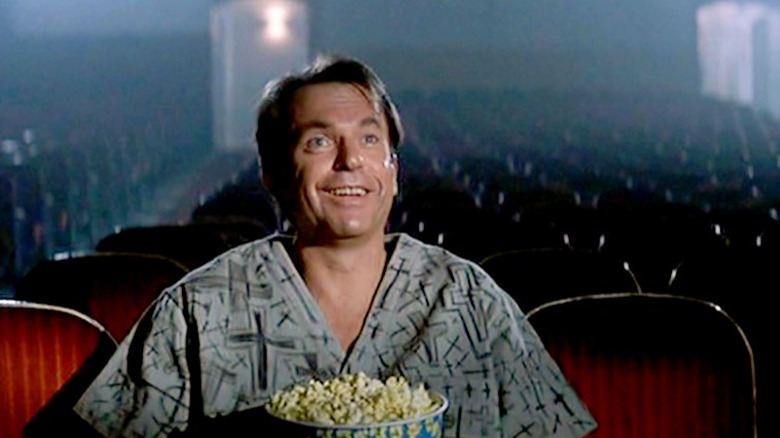
"In the Mouth of Madness" is elevated considerably by the work of 'Memoirs of an Invisible Man" co-star Sam Neill in the starring role. Inspired by the works of H.P. Lovecraft (see the similarly titled novella "At the Mountains of Madness"), John Carpenter's work here is considerably more internal than some of his past offerings. A tale of insanity, madness, and Carpenter's signature terror, it's a classic late-century horror outing and one of Carpenter's best.
Still, the story of an insurance investigator's look into inexplicable disappearances in a small town is somewhat constrained by Carpenter's more mainstream tendencies. The internal horror becomes too external at times, and per what were likely studio demands, "In the Mouth of Madness" has a curious habit of undercutting its most resonant moments with some expository nonsense. Yet, it remains a gorgeous slice of Carpenter history, and that bus scene alone is worth getting lost in.
Someone's Watching Me! (1978)
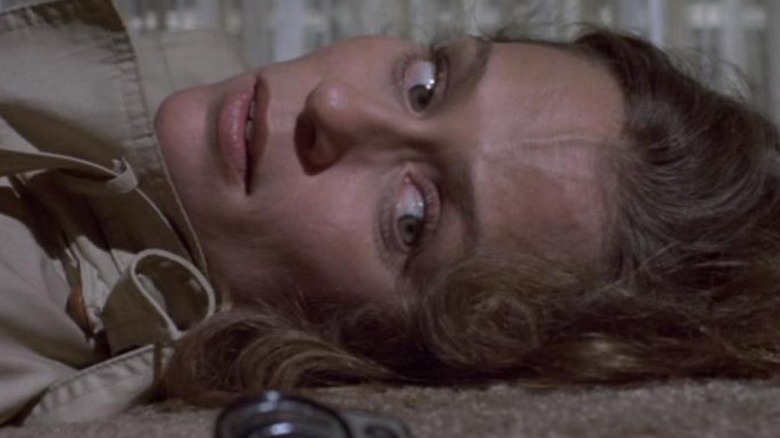
Right before John Carpenter shot "Halloween," he wrapped his work on NBC's "Someone's Watching Me!," a thoroughly tense slice of Hitchcockian terror (refracted, of course, through a made-for-TV-lens). Lauren Hutton stars as Leigh Michaels, a television director who recently relocated from New York to Los Angeles. She ingratiates herself with Sophie (Adrienne Barbeau), a lesbian associate at work — go queer representation — and settles into her new luxury apartment with ease. That is, of course, until she begins to suspect someone has been watching her.
Intentionally or not, Chloe Okuno's contemporary masterpiece "Watcher" draws a lot of parallels to Carpenter's work here, where a young woman in a new city by herself is relentlessly pursued and menaced by an unseen assailant. Like "Halloween," Carpenter's horror here is more suggestive than anything, though he does manage a gut punch or two within the constraints of television censorship. Honestly, had "Someone's Watching Me!" been a theatrical release, there's no doubt it would stand among the auteur's classics.
Big Trouble In Little China (1986)
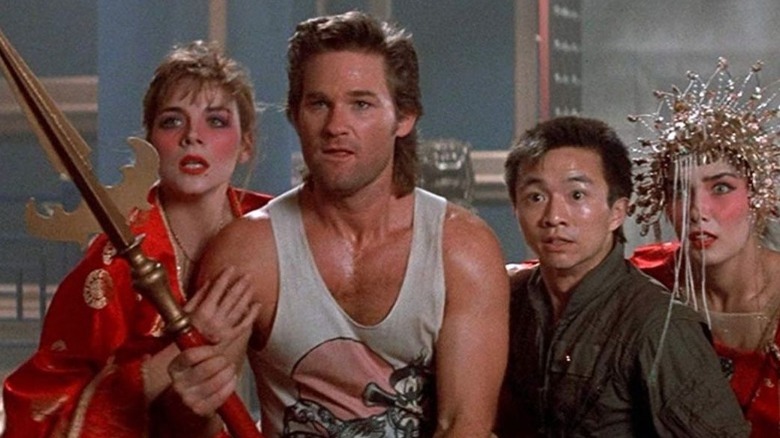
No one is going to be surprised to hear this, but while "Big Trouble in Little China" was met with lukewarm reception at release, it has since steadily evolved into a cult classic. In fact, John Carpenter might well be the king of cult cinema. Where his movies flop both critically and commercially, he remains consistently ahead of the times. Carpenter is and has been big ... it's the pictures that got small.
Frequent collaborator Kurt Russell stars as Jack Burton, a truck driver embroiled in a battle between good and evil in an ancient realm beneath San Francisco's Chinatown. At times, the movie leans heavily into stereotypes, and those moments are the sole pox on what is otherwise a pitch-perfect cult classic. While it's unconventional work from Carpenter, the cast — especially Kim Cattrall and Russell — are as committed as ever. It won't work for everyone, and perhaps more than any other release, it's the movie that best encapsulates the idea of either getting Carpenter or not. Still, for those who get it, "Big Trouble in Little China" is big fun.
Christine (1983)
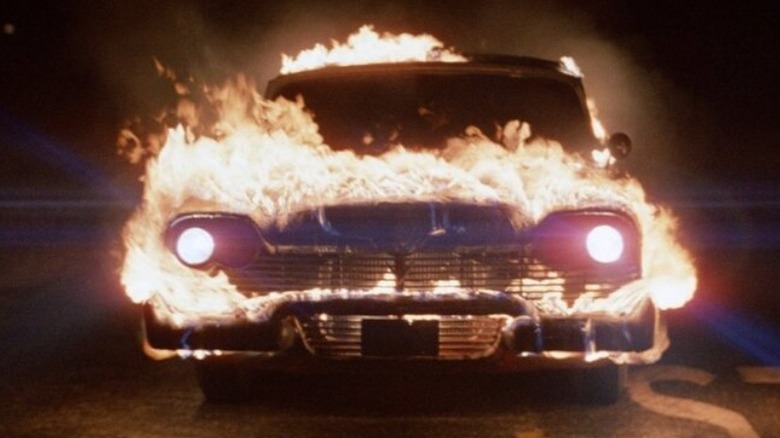
In the late '70s and early '80s, John Carpenter was on a roll ... literally. Behind the wheel of a 1958 Plymouth Fury, he was barreling down the cinematic road, delivering horror classic after horror classic. While his adaptation of Stephen King's titular novel "Christine" isn't the best King adaption there is (always and forever, that honor will belong to "The Shining"), it is one of the best, serving as a cool, chilling, gorgeously composed parable about the roots of evil.
Director David Gordon Green drew considerably from "Christine" for his capstone "Halloween" ending "Halloween Ends." Such is the case with most Carpenter genre fare, serving as a perennial well of inspiration and influence from one of the best there is. "Christine," additionally, improves on King's novel in several key ways, namely its distinct cinematic feel. The story of a teenage boy who becomes the tool of a possessed Plymouth proved that killer cars have never been this radical or terrifying.
Escape From New York (1981)
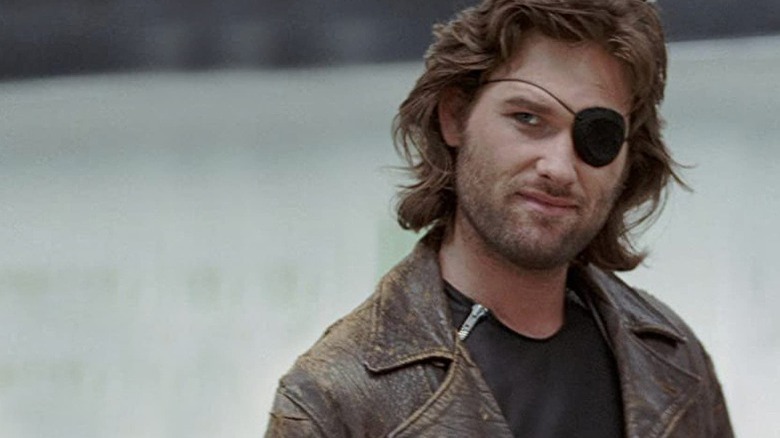
"Escape from New York" is a bonafide masterpiece. It's the whole "Halloween" gang back together, with John Carpenter directing, a script co-written by Michael Myers himself Nick Castle, and the inimitable Debra Hill producing. In a crime-ridden world, Manhattan has been converted into a maximum-security prison. When the President's (Donald Pleasance, the gang really is all here) plane is hijacked and crashed into a borough of the city, federal prisoner and macho man Snake Plissken (Kurt Russell, never better) is tasked with bringing him back safely. If he does so within a day's time, his crimes will be pardoned.
Carpenter makes the most of his $6 million budget here. Not only was the film a critical and financial success, but it also inspired a sequel years later. Carpenter would return to direct, and while "Escape from L.A." has its own charms, it doesn't come anywhere close to the sheer apocalyptic majesty on display here. Wickedly subversive, remarkably cool, and dangerous where it counts most, "Escape from New York" simply rocks. It also served as a none-too-subtle inspiration for movies like "Lockout" and "Suicide Squad."
They Live (1988)
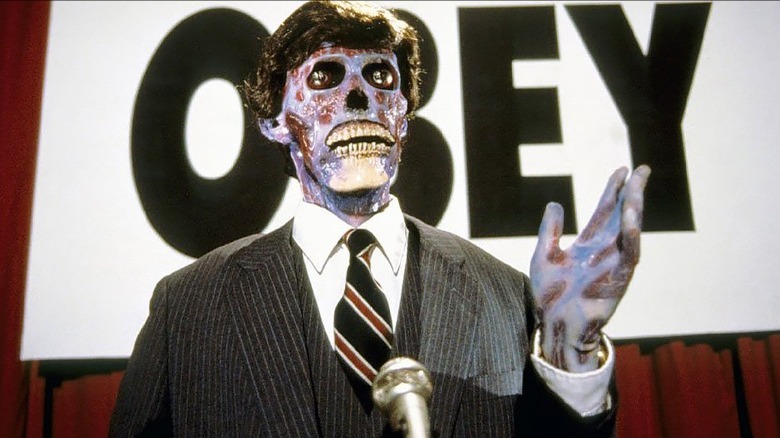
The clothing brand OBEY, a staple at the likes of Pac Sun and Urban Outfitters, appropriates the iconography of John Carpenter's "They Live" liberally, and they do so on purpose. A classic of totalitarian, consumerist-overdrive, Carpenter's movie might be a little heavy-handed in its allegorical tale of an alien invasion, but its themes and resonance endure.
Roddy Piper is there to chew bubblegum and kick butt. Well, he's also there to track down the corporate overlords sending subliminal messages to the populace writ large, encouraging them to stay in line, consume, reproduce, conform, and do whatever else the alien seers demand. It's silly, and Carpenter luckily never takes things too seriously, even giving Piper's drifter Nada a pair of sunglasses with which to see the hidden messages. As outrageous as the plotting and staging are (intentionally so, of course) there's something enduringly chilling about Carpenter's capitalist parable. So much so, it remains one of the definitive bits of social satire ever committed to film.
Starman (1984)
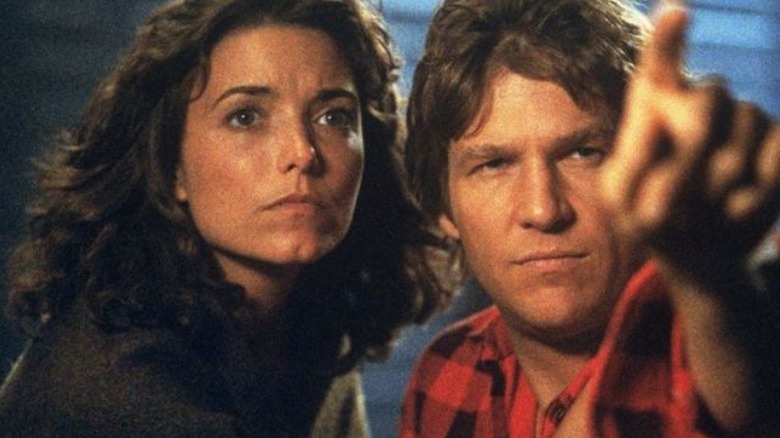
With the illustrious effects work of Industrial Light & Magic and an Oscar-nominated turn from Star Jeff Bridges, John Carpenter's "Starman" is a marvel of science fiction filmmaking. It was also a decisive and noteworthy turn in the director's blood-soaked career up to that point. While its box office gross was a disappointment, it endures as a classic template of '80s science fiction, a deeply moving, romantic, and awe-inspiring tale of lost love and space spectacle.
While "Starman" is difficult to rank among his filmography by dint of its genre, it's not terribly unlike the other work. No different than his late contemporary Wes Craven, John Carpenter is a remarkably humanistic filmmaker, and "Starman" best conceptualizes his fondness for vulnerability in its tale of human/alien romance. The full breadth of emotion lies not in effects or tight scripting, but in the mind and the heart. From there, Carpenter plunges and excavates the most enduring scares and most profound confessions of futile love. While "Starman's" legacy might not be on par with the likes of "Halloween," it's a crowning achievement in its own right.
Assault On Precinct 13 (1976)
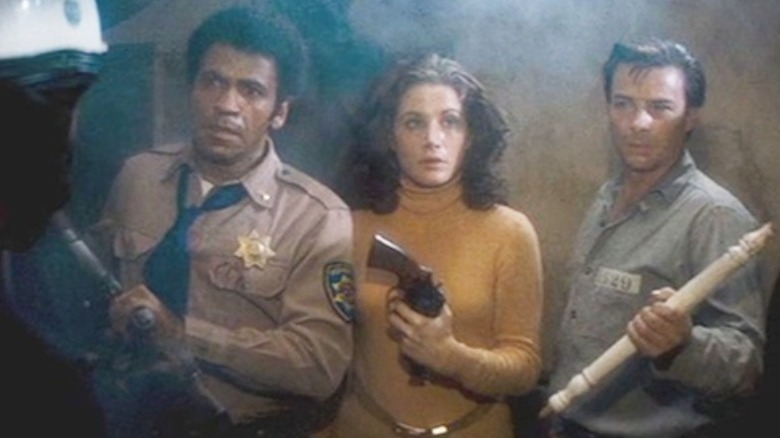
"Assault on Precinct 13" is gnarlier and grimmer than most of John Carpenter's other works. While it was remade with a glossy Hollywood touch in 2005, putting Ethan Hawke and Laurence Fishburne in front of the camera, the original remains a treasure trove of unkempt violence and pervasive nihilism. The ice cream scene alone remains one of the most chilling deaths ever committed on screen.
Taking its inspiration from Howard Hawks' "siege western Rio Bravo," a defunct police station is targeted by a criminal gang and a ragtag band of survivors must endure an onslaught of bullets, intruders, and criminals if they hope to survive the experience. A bonafide exploitation movie, "Assault on Precinct 13" reeks of authentic grindhouse charm. Narratively it doesn't amount to much, but thematically and visually it's remarkably accomplished, especially so on account of its minuscule budget of $100,000 dollars. Bullets fly, blood sprays, and while it's a curious precursor to the considerably more restrained "Halloween," it proves that the slasher classic didn't make the man ... he was already there.
The Fog (1980)
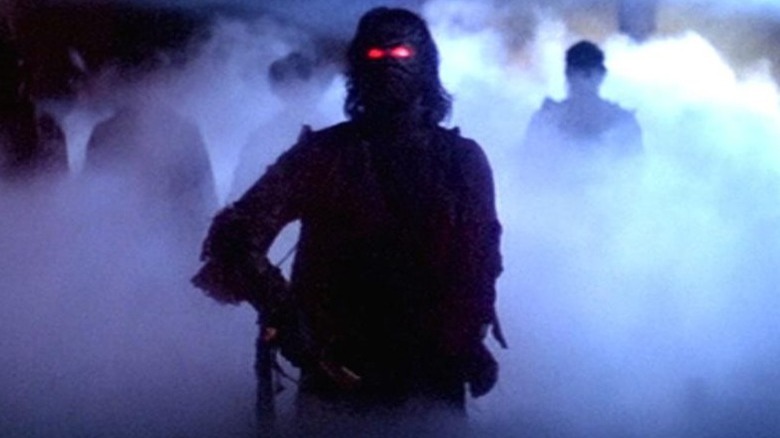
"The Fog" might bring back John Carpenter favorites Jamie Lee Curtis and Nancy Loomis, even adding Janet Leigh to the roster for an added bit of fun, but it's Adrienne Barbeau's Stevie Wayne that makes the movie the retro, synth-singed classic it is. Barbeau's radio DJ spends the bulk of the movie trapped alone in a lighthouse where she broadcasts her show, watching as the sinister fog slowly rolls into Antonio Bay.
Legend says that the founders of Antonio Bay deliberately sank the ship named Elizabeth Dane to plunder the priceless treasures aboard. The fog appears during the town's centennial celebration, threatening anyone unfortunate enough to wander in. One of Carpenter's best, it's as restrained, frightening, and methodical as "Halloween." There's not a single thing wrong with "The Fog" (its remake notwithstanding). It's such a classic, director Johannes Roberts even borrowed the score for his own "The Strangers: Prey at Night."
The Thing (1982)
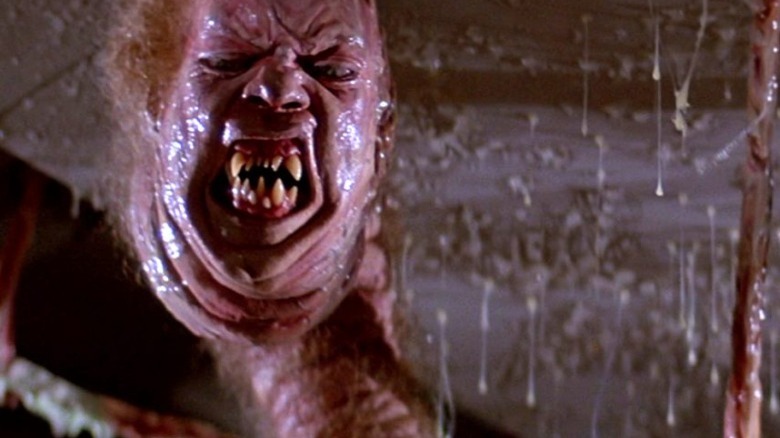
"The Thing," no different than 1978's sci-fi horror classic "Invasion of the Body Snatchers," is actually a remake. John Carpenter is working from both John W. Campbell's original novella "Who Goes There" as well as Christian Nyby's "The Thing From Another World." Famously, "The Thing" was maligned upon release, only reaching classic status in later years. Now, it's considered one of the best horror movies of all time, and possibly the best remake ever. Its icy chills, methodical terror, and groundbreaking special effects endure decades on. Most filmmakers are lucky to have a single true masterpiece in their catalog. Alongside "Halloween," Carpenter has two.
With a prequel, video game, and sundry other adaptations, Carpenter's iteration is no doubt the definitive version of Campbell's work. It's a repulsive yet strangely endearing work, and frequent Carpenter collaborator Kurt Russell is remarkably good as R.J. MacReady, the helicopter pilot tasked with identifying the alien life force threatening a remote Antarctic research facility. There has never been anything quite like it since. In truth, the science fiction genre would look considerably different today had Carpenter not accomplished such a magnificent, blood-curdling feat here.
Halloween (1978)
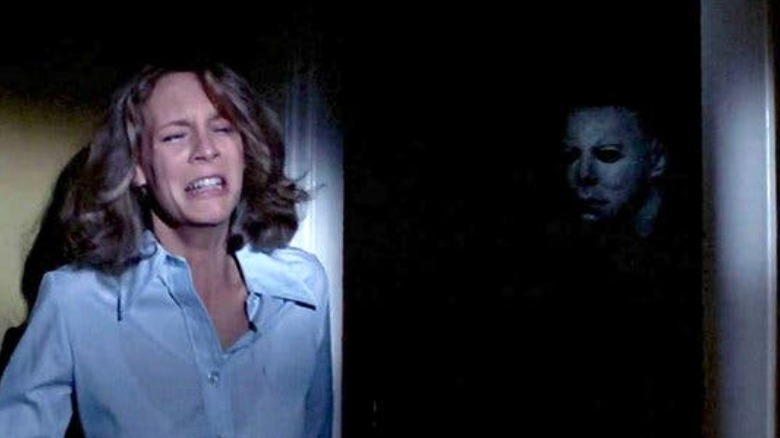
Everyone knows everything about 1978's "Halloween." The perennial tale of a masked boogeyman hacking up babysitters on Halloween night, John Carpenter's indie effort here is a triumphant success, a movie so remarkably distinct it caused seismic shifts in the horror genre from production to audience reception. "Halloween" changed what a horror movie was and could be. As a hallmark of indie filmmaking, it's aspirational, changing Hollywood writ large in the process.
Carpenter remains involved in the franchise, producing the latest three entries from David Gordon Green's quasi-self-contained trilogy — it follows the '78 film but ignores the seven subsequent sequels — though nothing in the 45 years since has come close to matching his original vision. Filming on-location in California, painting pumpkins orange, and casting an unknown group of actresses including the now legendary Jamie Lee Curtis, "Halloween" was the little horror movie that could ... and did. Without "Halloween," the horror genre would look very different today. There's no doubt, too, that it would look a whole lot worse.
Read this next: 14 Horror Movie Flops That Became Cult Classics
The post The 20 Best John Carpenter Movies Ranked appeared first on /Film.
0 Comments